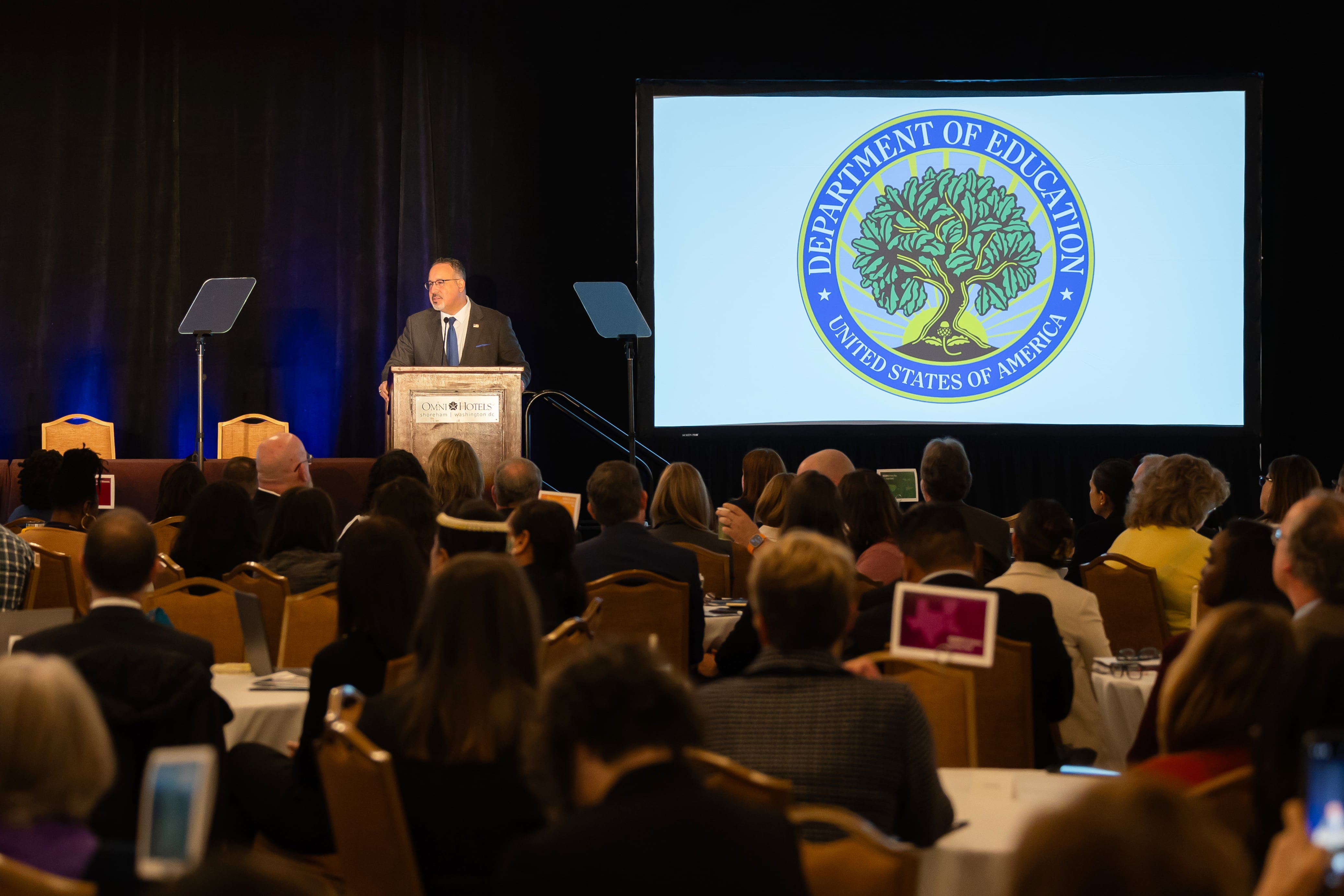Sign up for Chalkbeat’s free weekly newsletter to keep up with how education is changing across the U.S.
With a deadline looming to spend pandemic education dollars, the Biden administration has proposed making another $8 billion available to states and school districts to encourage better attendance and support academic recovery through tutoring and summer school.
The idea is a key component of President Joe Biden’s proposed budget for the U.S. Department of Education for fiscal year 2025, and represents an acknowledgment that schools still have a lot of work to do to recover from pandemic learning disruptions. The proposal comes a few months after the Biden administration called on schools to prioritize spending remaining COVID relief funding in these same areas.
The president’s budget proposal, announced Monday, also calls for modest increases to federal programs supporting high-poverty schools, students learning English as a second language, and students with disabilities. The administration also wants more money to support the Office for Civil Rights, and a $750 increase in the maximum Pell Grant award to help make college more affordable.
The White House budget plan will almost certainly not be adopted as written. It heads to a dysfunctional Congress that has careened between threats of government shutdown and short-term spending resolutions. The Republicans who control the House have been particularly hostile to Biden’s efforts to increase spending in several areas , including the Title I program that supports high-poverty schools.
Overall the budget proposal calls for more than $82 billion in discretionary spending for the education department, a 4% increase from this year.
Officials emphasized that this budget proposal complies with spending caps agreed to in last year’s bipartisan Fiscal Responsibility Act, while still investing in initiatives they hope will improve student success.
“When it comes to education, this budget is about raising the bar,” Secretary of Education Miguel Cardona said in a call with reporters. “There are historic investments promised on top of historic investments delivered.”
Budget offers way to continue tutoring, attendance outreach
American schools received a combined $190 billion in assistance across three pandemic aid packages and have until September to spend any remaining money. Many schools have come to rely on their tutoring programs and want to keep them going after the pandemic aid expires.
But how they’ll fund them has been a big question. Some states have pledged added tutoring funds, but many districts would likely struggle to keep providing intensive help to students without making cuts elsewhere in their budget.
Similarly, the rate at which students are missing lots of school remains well above pre-pandemic levels in many parts of the country. Many schools launched home visit programs or hired staff specifically to work with kids who aren’t attending regularly, but school leaders say it will take additional time and investment to re-engage students and continue to boost attendance rates.
Expanded summer school programs were a popular investment during the pandemic, though they’ve been only moderately successful in helping students catch up. They’ve also been a common place school leaders have scaled back as COVID relief funding has wound down.
The proposed $8 billion in new money isn’t intended to replace pandemic assistance but would supplement current efforts. Officials envision a competitive grant program that would prioritize high-poverty schools, schools in communities especially hard-hit by COVID, and schools identified as needing academic improvement under federal accountability rules.
More money for English learners, civil rights investigations
Biden’s budget proposal calls for a 1.1% increase, or $200 million, to local grants in the Title I program, which provides money to low-income schools. Earlier in his administration, Biden called on Congress to double spending on Title I, but that hasn’t come to fruition. Congressional Republicans have questioned whether schools need more money after the pandemic stimulus, and last year, they sought to significantly cut Title I spending.
Cardona characterized this budget as defending public education from a “slash-and-burn” approach that would endanger the futures of American students.
Similarly, the White House is proposing a 1.4% increase in spending to support K-12 special education services under the Individuals with Disabilities Education Act, as well as additional money for infants, toddlers, and preschool students with disabilities and grants to recruit special education teachers. Advocates have long called for the federal government to increase special education funding. Federal law lays out disabled students’ educational rights but leaves most of the costs to states and school districts.
The budget proposal calls for a roughly 5% increase or $50 million in new spending for Title III, which supports English learners.
Biden’s budget proposal also includes an extra $22 million, a 16% increase, for the Office for Civil Rights, which conducts investigations into allegations of discrimination in schools. Recently, the department announced it is looking into several incidents involving antisemitism or anti-Muslim discrimination at colleges and K-12 schools since the war between Israel and Hamas broke out in October.
The budget also calls for increased funding for preschool, student mental health, and community schools, which provide a wide range of services to support students and their families, as well as programs to encourage diverse candidates to enter the teaching profession.
The budget proposal includes a few cuts as well, including a 9% or $40 million reduction in a program that supports new charter schools and the replication of high-quality charter models.
Budget seeks to mitigate college costs
Biden’s budget blueprint would also increase the maximum Pell Grant award to $8,145, a 10% increase from current levels. Pell grants are available to college students from low-income families, and unlike loans, do not need to be repaid.
Budget analysts have warned of a looming shortfall in the Pell program after Congress expanded eligibility at the same time more students are heading back to college. The most recent continuing resolution to keep the federal government open walks back some of that recent expansion.
Advocates have argued that the maximum Pell award should be closer to $13,000 to keep pace with tuition increases and keep the door open to college for students of modest means.
The budget would increase funding for programs that allow high school students to earn college credit before graduating and for grants that help colleges support first-generation students and increase graduation rates.
The budget also calls for partnerships with states and tribes to make two years of community college free for students going to college for the first time and workers looking to change careers. Free community college was one of several education proposals that Biden ran on in 2020 that hasn’t gotten traction.
And the budget calls for more investment in the Office of Federal Student Aid amid a rocky rollout of a new federal financial aid form.
Erica Meltzer is Chalkbeat’s national editor based in Colorado. Contact Erica at emeltzer@chalkbeat.org.
Kalyn Belsha is a senior national education reporter based in Chicago. Contact her at kbelsha@chalkbeat.org.






